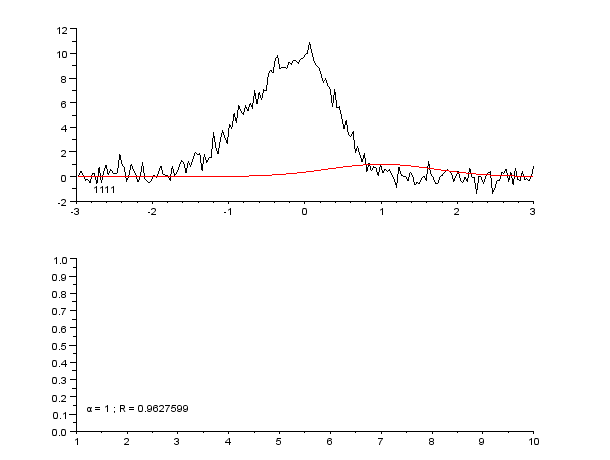|
Target Motion Analysis
Target Motion Analysis (TMA) is a process to determine the position of a target using passive sensor information. Sensors like passive ''RADAR'' and ''SONAR Sonar (sound navigation and ranging or sonic navigation and ranging) is a technique that uses sound propagation (usually underwater, as in submarine navigation) to navigate, measure distances (ranging), communicate with or detect objects on o ...'' provide directional and occasionally frequency information. TMA is done by marking from which direction the sound comes at different times, and comparing the motion with that of the operator's own ship. Changes in relative motion are analyzed using standard geometrical techniques along with some assumptions about limiting cases. There are two different ways to execute TMA: manual and automated. Manual TMA Manual TMA methods involve computation executed by humans instead of computers. There exist several manual TMA methods such as: Ekelund Ranging, 1934 Rule, Spears Wheel etc. ... [...More Info...] [...Related Items...] OR: [Wikipedia] [Google] [Baidu] |
Radar
Radar is a detection system that uses radio waves to determine the distance (''ranging''), angle, and radial velocity of objects relative to the site. It can be used to detect aircraft, ships, spacecraft, guided missiles, motor vehicles, weather formations, and terrain. A radar system consists of a transmitter producing electromagnetic waves in the radio or microwaves domain, a transmitting antenna, a receiving antenna (often the same antenna is used for transmitting and receiving) and a receiver and processor to determine properties of the objects. Radio waves (pulsed or continuous) from the transmitter reflect off the objects and return to the receiver, giving information about the objects' locations and speeds. Radar was developed secretly for military use by several countries in the period before and during World War II. A key development was the cavity magnetron in the United Kingdom, which allowed the creation of relatively small systems with sub-meter resolution. Th ... [...More Info...] [...Related Items...] OR: [Wikipedia] [Google] [Baidu] |
Sonar
Sonar (sound navigation and ranging or sonic navigation and ranging) is a technique that uses sound propagation (usually underwater, as in submarine navigation) to navigation, navigate, measure distances (ranging), communicate with or detect objects on or under the surface of the water, such as other vessels. "Sonar" can refer to one of two types of technology: ''passive'' sonar means listening for the sound made by vessels; ''active'' sonar means emitting pulses of sounds and listening for echoes. Sonar may be used as a means of acoustic location and of measurement of the echo characteristics of "targets" in the water. Acoustic location in air was used before the introduction of radar. Sonar may also be used for robot navigation, and SODAR (an upward-looking in-air sonar) is used for atmospheric investigations. The term ''sonar'' is also used for the equipment used to generate and receive the sound. The acoustic frequencies used in sonar systems vary from very low (infrasonic ... [...More Info...] [...Related Items...] OR: [Wikipedia] [Google] [Baidu] |
Gauss–Newton Algorithm
The Gauss–Newton algorithm is used to solve non-linear least squares problems, which is equivalent to minimizing a sum of squared function values. It is an extension of Newton's method for finding a minimum of a non-linear function. Since a sum of squares must be nonnegative, the algorithm can be viewed as using Newton's method to iteratively approximate zeroes of the components of the sum, and thus minimizing the sum. It has the advantage that second derivatives, which can be challenging to compute, are not required. Non-linear least squares problems arise, for instance, in non-linear regression, where parameters in a model are sought such that the model is in good agreement with available observations. The method is named after the mathematicians Carl Friedrich Gauss and Isaac Newton, and first appeared in Gauss' 1809 work ''Theoria motus corporum coelestium in sectionibus conicis solem ambientum''. Description Given m functions \textbf = (r_1, \ldots, r_m) (often called ... [...More Info...] [...Related Items...] OR: [Wikipedia] [Google] [Baidu] |
Tracking
Tracking may refer to: Science and technology Computing * Tracking, in computer graphics, in match moving (insertion of graphics into footage) * Tracking, composing music with music tracker software * Eye tracking, measuring the position of the eye relative to the head * Finger tracking, measuring the positions of the fingers * Optical motion tracking, or motion capture, recording the precise movements of objects or people * Position tracking, monitoring the location of a mechanical system in real-time by counting pulses; see * Positional tracking, an essential component of augmented reality * Video tracking, locating an object in each frame of a video sequence * Mobile phone tracking, monitoring the physical location of a mobile phone * Internet tracking, analyzing online activity * Web visitor tracking, the analysis of visitor behavior on a website * Sleep tracking, monitoring sleeping experience (deep, REM, duration etc.) Life sciences * Animal migration tracking, perfo ... [...More Info...] [...Related Items...] OR: [Wikipedia] [Google] [Baidu] |


